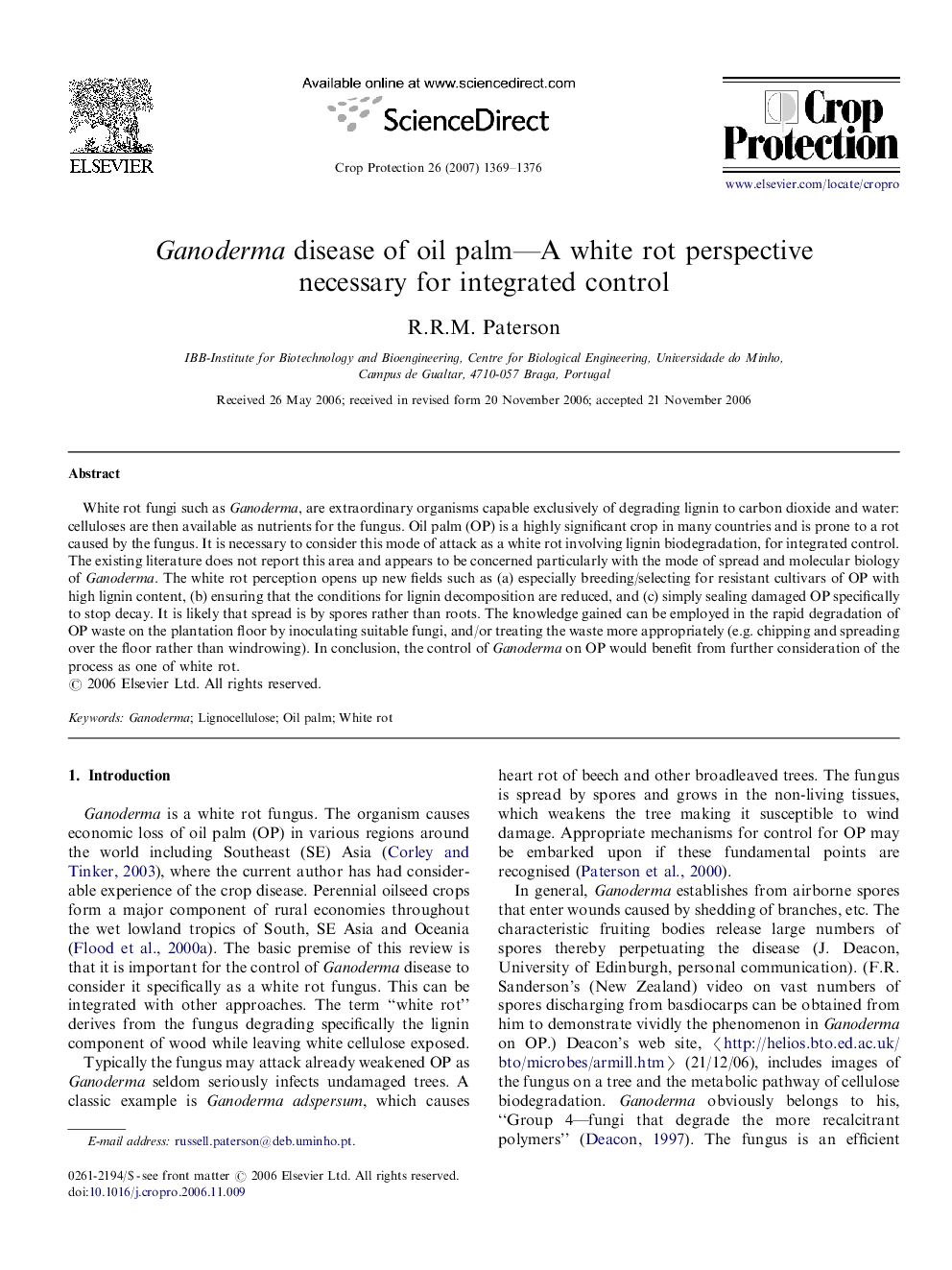| Article ID | Journal | Published Year | Pages | File Type |
|---|---|---|---|---|
| 4507882 | Crop Protection | 2007 | 8 Pages |
White rot fungi such as Ganoderma, are extraordinary organisms capable exclusively of degrading lignin to carbon dioxide and water: celluloses are then available as nutrients for the fungus. Oil palm (OP) is a highly significant crop in many countries and is prone to a rot caused by the fungus. It is necessary to consider this mode of attack as a white rot involving lignin biodegradation, for integrated control. The existing literature does not report this area and appears to be concerned particularly with the mode of spread and molecular biology of Ganoderma. The white rot perception opens up new fields such as (a) especially breeding/selecting for resistant cultivars of OP with high lignin content, (b) ensuring that the conditions for lignin decomposition are reduced, and (c) simply sealing damaged OP specifically to stop decay. It is likely that spread is by spores rather than roots. The knowledge gained can be employed in the rapid degradation of OP waste on the plantation floor by inoculating suitable fungi, and/or treating the waste more appropriately (e.g. chipping and spreading over the floor rather than windrowing). In conclusion, the control of Ganoderma on OP would benefit from further consideration of the process as one of white rot.
